Table of Contents[Hide][Show]
- Nutrivore Score for Trout – 710
- Trout Nutrition Facts
- Trout Nutrition Varies With Cooking
- Trout Nutrition Varies With Type
Health Benefits of Trout Nutrients+−
- Trout Provides 373% DV Vitamin B12 (Cobalamin)
- Trout Provides 336% DV EPA+DHA
- Trout Provides 23.9 g of Protein
- Trout Provides 45% DV Vitamin B5 (Pantothenic Acid)
- Trout Provides 43% DV Manganese
- Trout Provides 34% DV Vitamin B1 (Thiamin)
- Trout Provides 2875.0 μg of Carotenoids
- Trout Provides 32% DV Vitamin B3 (Niacin)
- Trout Provides 29% DV Vitamin B2 (Riboflavin)
- Trout Provides 26% DV Selenium
- Trout Provides 24% DV Copper
- Trout Provides 23% DV Phosphorus
- Trout Provides 22% DV Vitamin D
- Trout Provides 1.3 mg of CoQ10
- Trout Provides 20% DV Vitamin B7 (Biotin)
- How Much Trout Should We Eat Per Day?
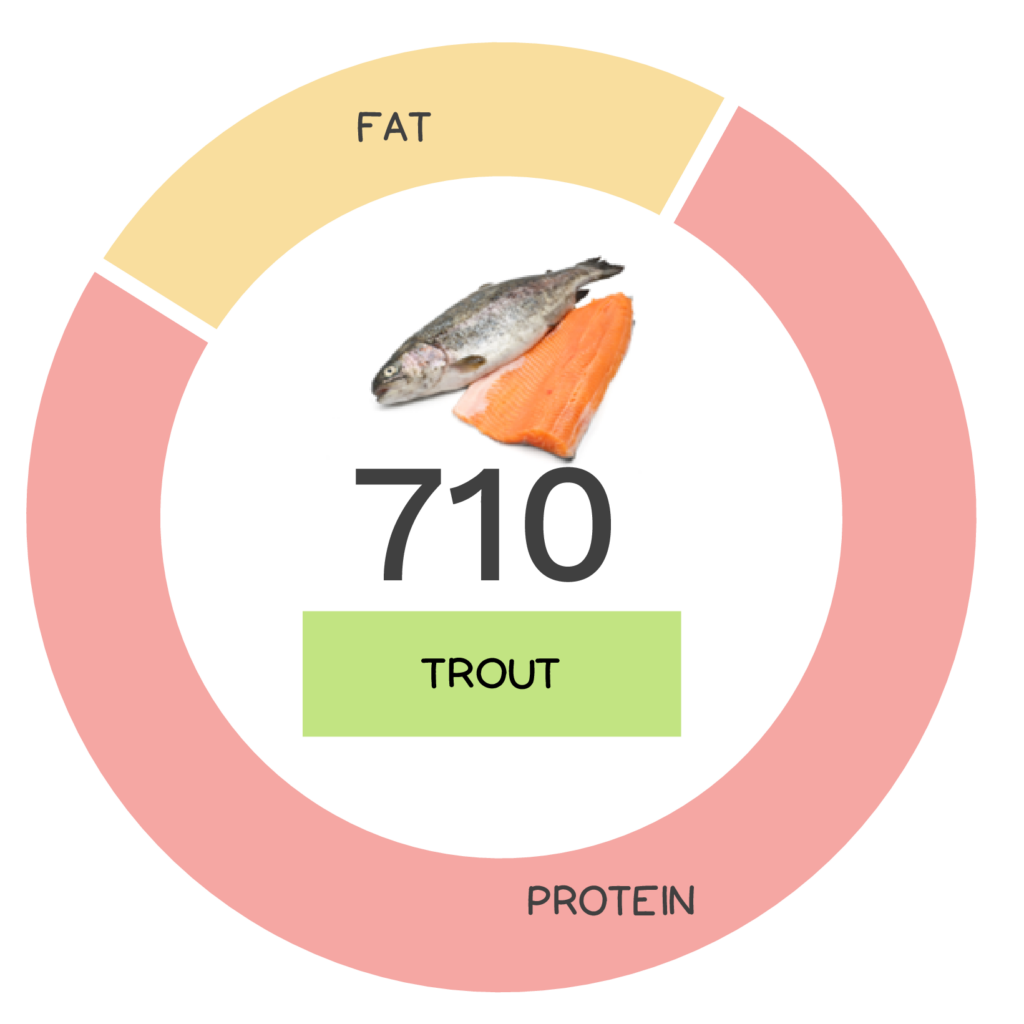
Trout are adored by foodies and fisherman alike. Prized as a recreational sporting fish by anglers, this fish also tastes delicious and is nutrient-dense. I “trout” you’ll have trouble finding reasons to start incorporating this fish into your diet!
Trout does not refer to one specific fish but to many species of oily cold-water fish that are closely related to salmon and char.
Trout are a type of oily cold-water fish that are closely related to salmon and char, which are all members of the same family of fish (Salmonidae). Trout does not refer to one specific fish but to many species spread across several genera including well-known examples such as brook trout, brown trout, bull trout, lake trout, and rainbow trout to name a few. While all these species are unique in their own way, most types of trout live in cool, freshwater lakes, rivers, and streams (with the exception of steelhead trout, which spend time in the ocean). Actually, steelhead are rainbow trout that live for several years at sea before returning to spawn in fresh water in a manner similar to salmon. To do this, they undergo amazing physiological changes allowing them to adapt to varying salt levels in differing habitats. Trout are native to North America, northern Asia and Europe but have been introduced into other parts of the world (in some cases becoming invasive species). They vary in terms of their coloring, which changes to camouflage with their surroundings and during mating. These fish range in size with lake trout as big as 72 lbs (33 kg) in the record books! Trout can live for up to 7 years – their scales have growth rings which can be read in a manner similar to tree growth rings to determine their age!
Trout scales have growth rings which can be read in a manner similar to tree growth rings to determine their age – they can live up to 7 years.
These fish have a diverse diet including other fish and aquatic creatures, land animals (including grasshoppers and mice if given the chance) and very often flies – which is why fly fishing is a popular method for landing this fish (the earliest account of fly-fishing dates back to 200 AD!). They can also be caught by traditional reel and rod methods and because they are able to withstand colder waters, are popular in ice fishing as well. With so many options, it’s not surprising that trout is such a popular sporting fish. Believe it or not, trout tickling is actually another method of catching trout, without the use of equipment of any kind, and is even mentioned in Shakespeare’s Twelfth Night. Would-be fisherman locate trout underneath overhanging riverbanks and by rubbing their underbelly with their fingers are able to induce a trance-like state at which point they are able to scoop them out of the water with their bare hands. Not a laughing matter for the fish, that’s for sure!
Trout is a popular sporting fish as it can be caught via fly fishing, traditional reel and rod fishing, ice fishing, or by tickling!
Unfortunately, native trout populations are on the decline in large part due to climate change which is causing warmer water temperatures. As such, today trout are also farmed in order to replenish stocks in heavily fished areas and for sale as food. Although their nutritional profile differs depending on whether they were farmed or fished, either way they are a healthy dietary addition. Though similar in taste to salmon, trout has a milder flavor (which depends on the fish’s diet) and is popular smoked but can be prepared in a variety of ways.
Learn What Foods to *ADD* to Your Diet
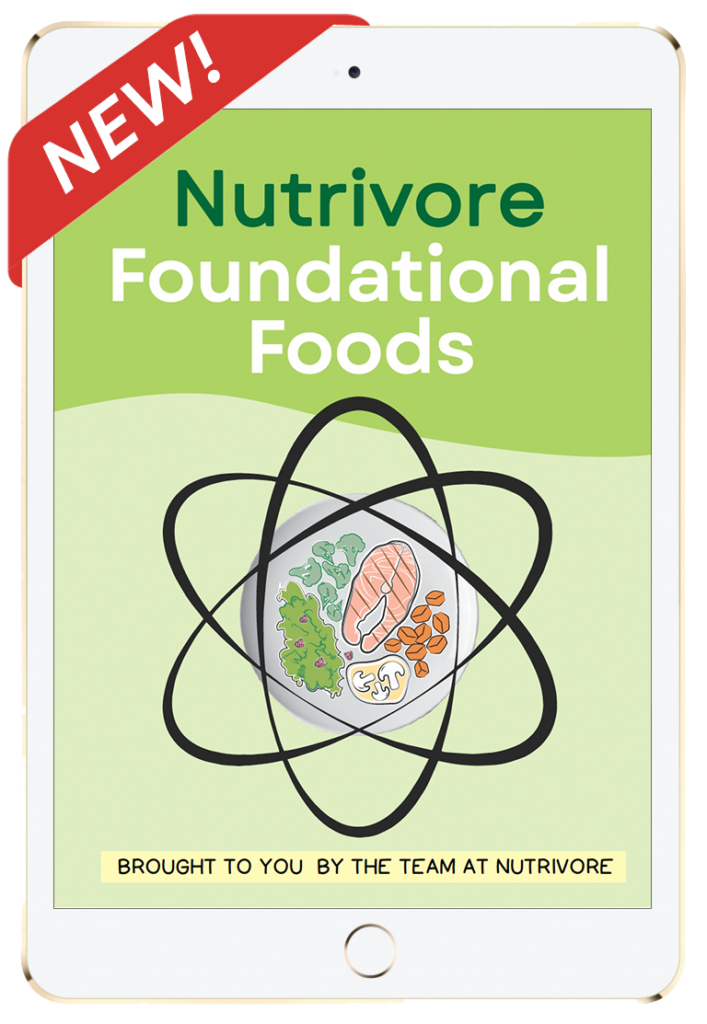
Nutrivore Foundational Foods
Learn what makes the 12 Nutrivore foundational food families nutritionally unique, their health benefits, which options are the most nutrient dense, how much of them to eat, plus various fun facts, practical pointers, and busting of common myths.
This very helpful resource will introduce you to new foods and expand your nutrition knowledge, making food choices easier!
Buy now for instant digital access.
Nutrivore Score for Trout – 710

Trout has a Nutrivore Score of 710, making it a high nutrient-dense food! Plus, it is a low-carb food; trout has 0 grams of net carbs per 115 gram serving.
Per serving, trout is a best source (>50% daily value) of EPA+DHA, and vitamin B12 (cobalamin); an excellent source (20-50% daily value) of carotenoids, copper, coQ10, manganese, phosphorus, protein, selenium, vitamin B1 (thiamin), vitamin B2 (riboflavin), vitamin B3 (niacin), vitamin B5 (pantothenic acid), vitamin B7 (biotin), and vitamin D; and a good source (10-20% daily value) of alpha-linolenic acid (ALA), choline, iodine, iron, monounsaturated fatty acids (MUFA), taurine, and vitamin B6 (pyridoxine).
Ditch Diets. Embrace Nutrients. Start with this FREE Guide.
Sign up for the free Nutrivore Newsletter, your weekly, science-backed guide to improving health through nutrient-rich foods — without dieting harder —and get the Beginner’s Guide to Nutrivore delivered straight to your inbox!

Trout Nutrition Facts
One serving of trout is standardized to 115 grams (4 ounces). A typical fillet of trout is 79 grams, which means: one fillet of trout is roughly equivalent to a little more than 2/3 of a serving. When you cook trout, it reduces in volume by approximately 20%: 100 grams raw trout is equivalent to 78 grams cooked trout.
Trout Nutrition Facts Per Serving
| Trout, raw | Nutrivore Score: 710 | Nutrient Density: High |
|---|---|---|
| Serving Size: 4 ounces (115 grams) | Protein: 23.9 grams | Net Carbohydrates: 0.0 grams |
| Calories: 170 | Total Fat: 7.6 grams | Dietary Fiber: 0.0 grams |

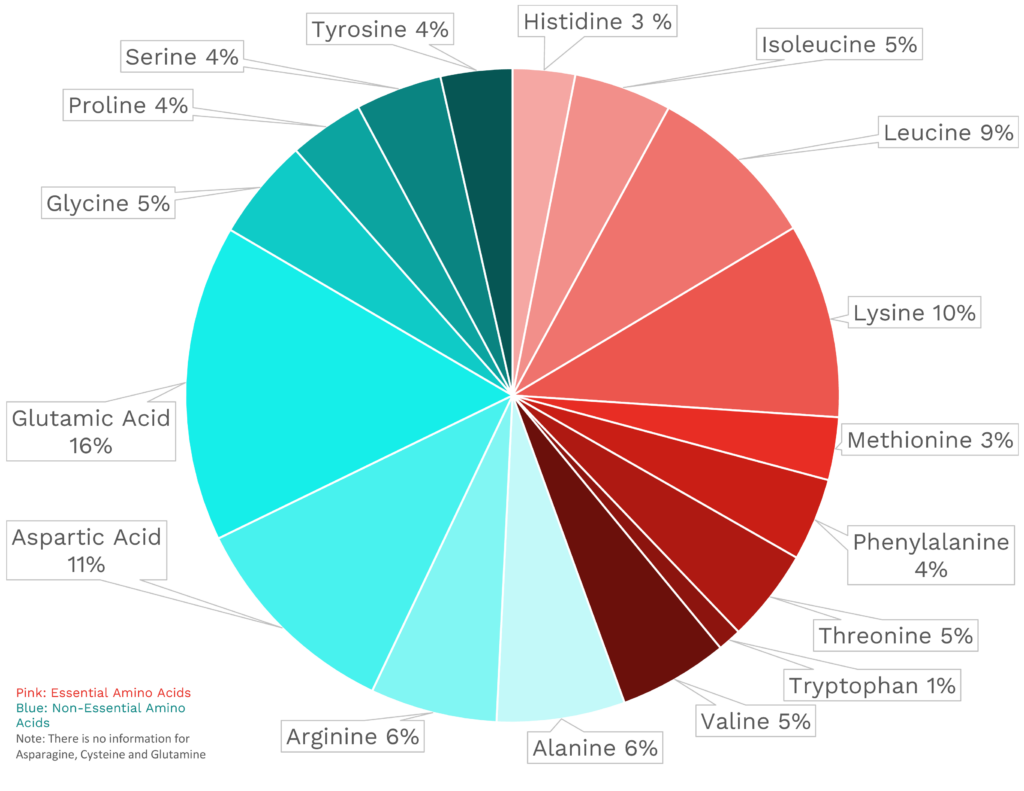

| VITAMINS | ||
|---|---|---|
| Vitamin A | 19.6 μg RAE | 2% DV |
| Vitamin B1 (Thiamin) | 402.5 μg | 34% DV |
| Vitamin B2 (Riboflavin) | 379.5 μg | 29% DV |
| Vitamin B3 (Niacin) | 5.2 mg | 32% DV |
| Vitamin B5 (Pantothenic Acid) | 2.2 mg | 45% DV |
| Vitamin B6 (Pyridoxine) | 230.0 μg | 14% DV |
| Vitamin B7 (Biotin) | 6.0 μg | 20% DV |
| Vitamin B9 (Folate) | 15.0 μg | 4% DV |
| Vitamin B12 (Cobalamin) | 9.0 μg | 373% DV |
| Vitamin C | 0.6 mg | 1% DV |
| Vitamin D (D2 + D3) | 4.5 μg | 22% DV |
| Vitamin E | 0.2 mg | 2% DV |
| Vitamin K | 0.1 μg | 0% DV |
| Choline | 74.8 mg | 14% DV |
| Myo-Inositol | 9.9 mg | ~ |
| CoQ10 | 1.3 mg | ~ |
| FUNCTIONAL FATS | ||
|---|---|---|
| MUFA | 3.7 g | 19% DV |
| ALA | 178.3 mg | 11% DV |
| EPA + DHA | 839.5 mg | 336% DV |
| CLA | 3.8 mg | ~ |
| Linoleic Acid | 0.2 g | 1% DV |
| MCT’s | 0.0 g | ~ |
| MINERALS | ||
|---|---|---|
| Calcium | 49.5 mg | 4% DV |
| Copper | 216.2 μg | 24% DV |
| Iodine | 28.8 μg | 19% DV |
| Iron | 1.7 mg | 10% DV |
| Magnesium | 25.3 mg | 6% DV |
| Manganese | 978.7 μg | 43% DV |
| Phosphorus | 281.8 mg | 23% DV |
| Potassium | 415.2 mg | 9% DV |
| Selenium | 14.5 μg | 26% DV |
| Sodium | 59.8 mg | 3% DV |
| Zinc | 0.8 mg | 7% DV |
| PHYTONUTRIENTS | ||
|---|---|---|
| Carotenoids | 2875.0 μg | ~ |
| Polyphenols | 0.0 mg | ~ |
| Phytosterols | 0.0 mg | ~ |
| Glucosinolates | ~ | ~ |
| Thiosulfinates | ~ | ~ |
| Betalains | ~ | ~ |
| AMINO ACIDS & PEPTIDES | ||
|---|---|---|
| Taurine | 69.0 mg | ~ |
| Ergothioneine | 0.0 mg | ~ |
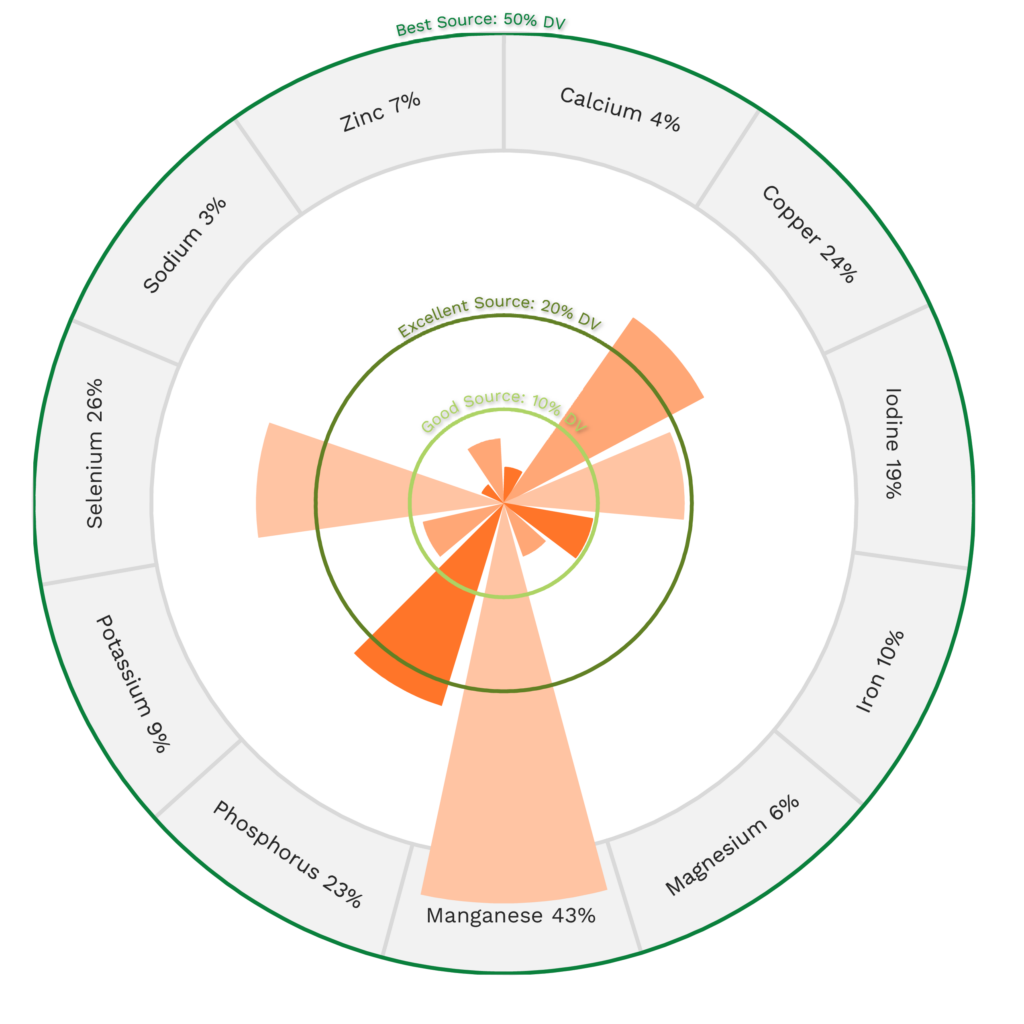
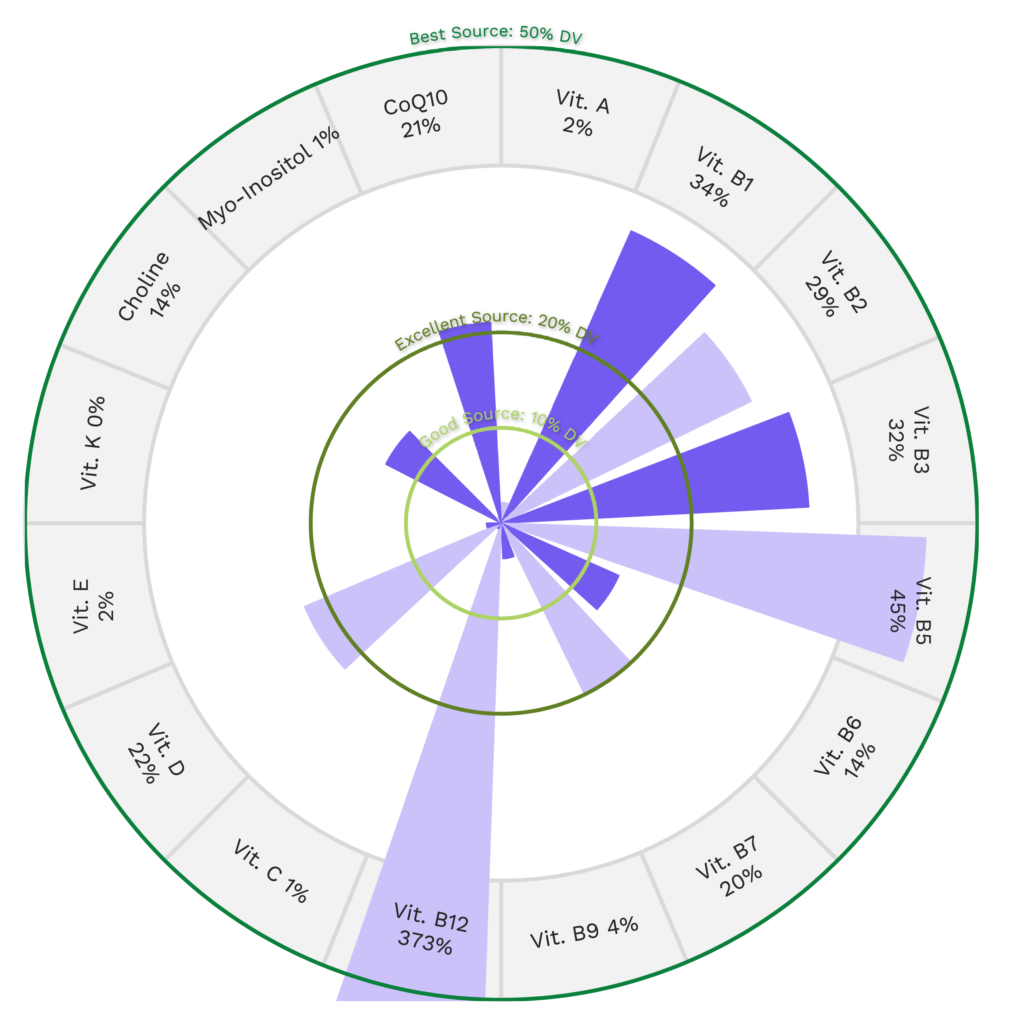
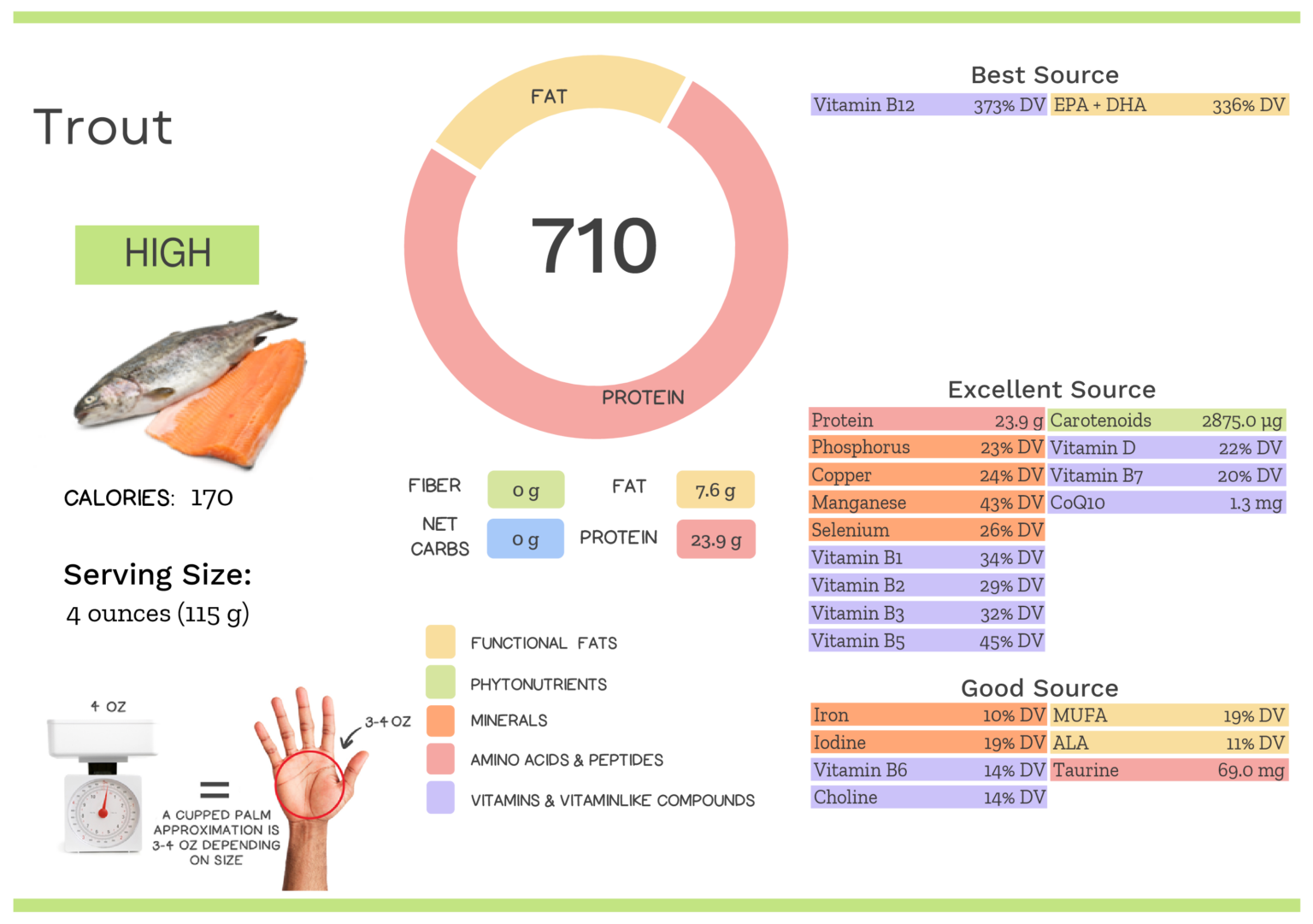

Quality Meat and Seafood
- 100% grass fed and finished beef, pasture-raised pork, pasture-raised chicken and wild-caught seafood
- Raised on regenerative family farms in the USA
- Fast delivery from our farms to your door
- Save 20% off for life, plus $15 off your first box, no coupon required
Trout Nutrition Varies With Cooking
The Nutrivore Score of trout varies depending on method of preparation.
| NUTRIVORE SCORE | |
|---|---|
| Trout, mixed species, cooked, dry heat | 650 |
| Trout, mixed species, raw | 710 |
Trout Nutrition Varies With Type
There are many types of trout, each with its own unique taste and nutrient profile, which means their Nutrivore Scores also vary. To maximize all the benefits that trout has to offer, try incorporating different types of trout into your diet, keeping in mind that that some types might be easier to find than others. Nutrivore Scores also vary based on the way in which the trout was raised (farmed or wild-caught). Typically wild-caught fish have higher levels of nutrients which results in higher Nutrivore Scores, but including any type of fish in our diet, farmed or wild-caught, will result in plenty of health benefits!
| NUTRIVORE SCORE | |
|---|---|
| Seatrout, mixed species, raw | 4811 |
| Trout, brook, New York State, raw | 4082 |
| Trout, mixed species, raw | 710 |
| Trout, rainbow, farmed, raw | 644 |
| Trout, rainbow, wild, raw | 645 |
Impressed by the bene-FISH-ial nutrition in trout? Maybe your friends will be too!
Health Benefits of Trout Nutrients
Let’s take a closer look at all of the best and excellent source of nutrients found in a 4-ounce serving of trout and see how they benefit our health.
Trout Provides 373% DV Vitamin B12 (Cobalamin)
Trout is a phenomenal source of vitamin B12 (cobalamin), providing 373% of the daily value per 4-ounce serving!
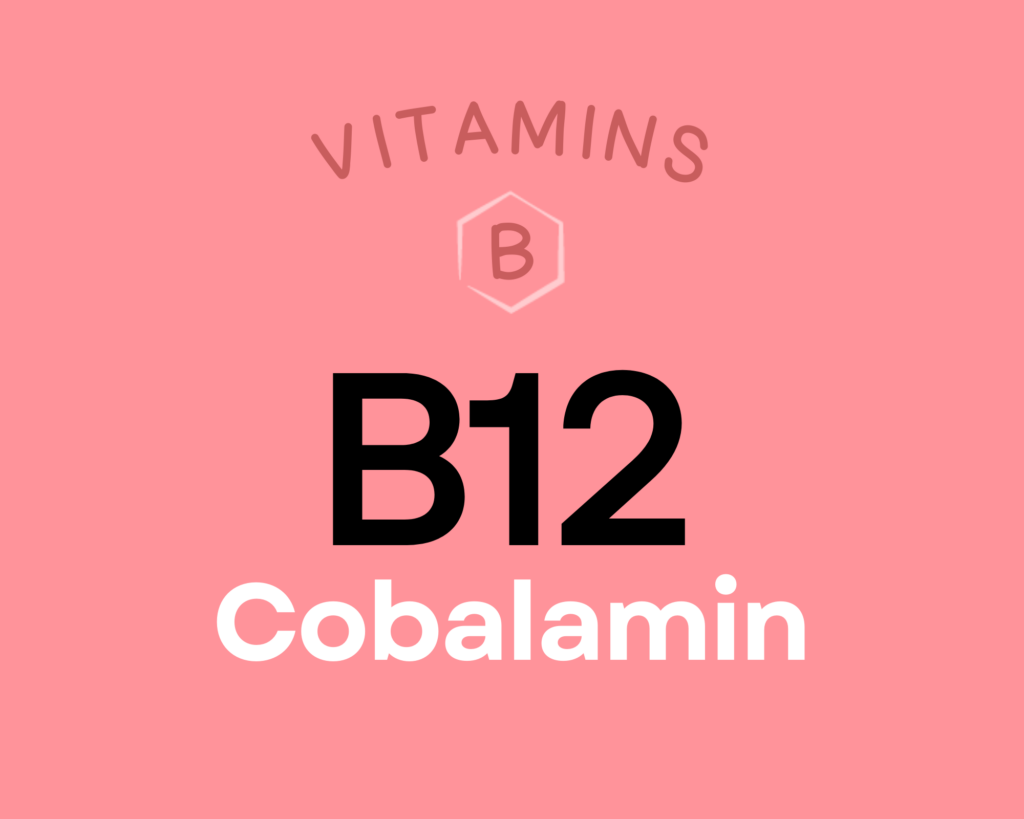
Vitamin B12 (cobalamin) is a water-soluble vitamin that serves as a cofactor for enzymes involved in energy metabolism, red blood cell production, DNA synthesis, neurotransmitter production, nervous system health, and folate metabolism. As a result of these roles, vitamin B12 is vital for maintaining brain and nervous system health, and may have a protective effect against dementia, Alzheimer’s disease, and depression. There’s also some evidence vitamin B12 may be cancer-protective, possibly through supporting folate metabolism (which then assists in repairing DNA damage). Learn more about vitamin B12 here.
Trout Provides 336% DV EPA+DHA
Trout is a fantastic source of EPA+DHA, providing 336% of the daily value per 4-ounce serving!
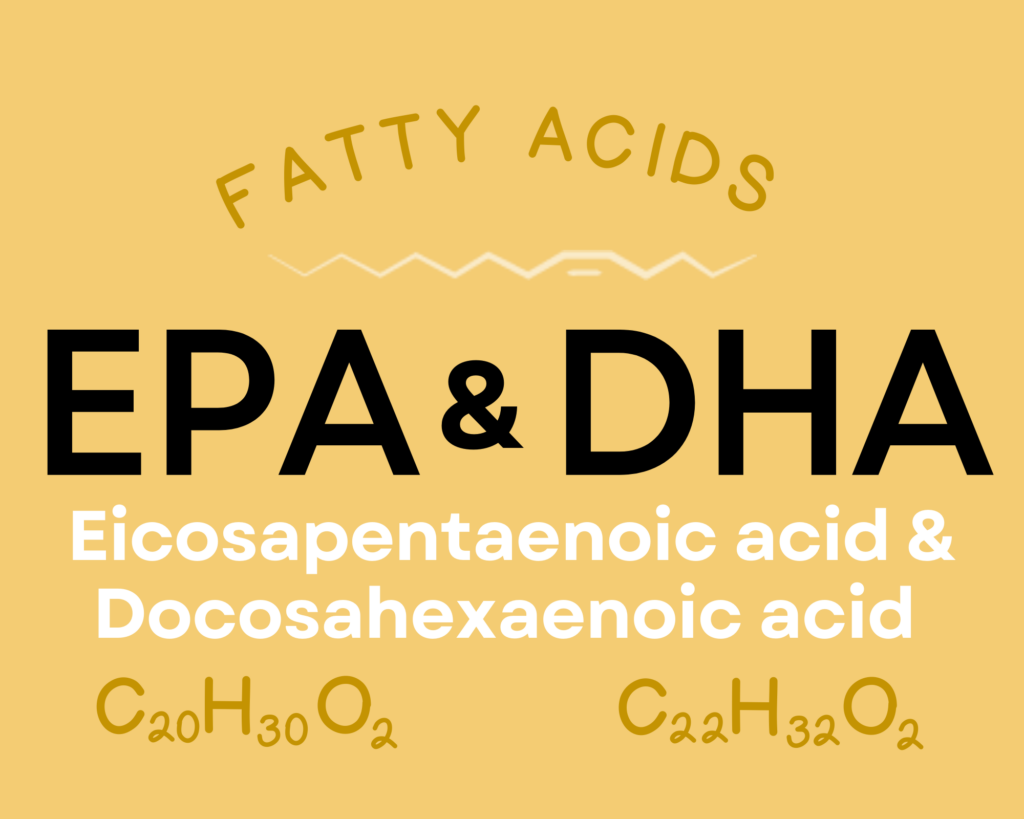
Eicosapentaenoic acid (EPA) and docosahexaenoic acid (DHA) are long-chain omega-3 fats that play important roles in neurological health, immune function, eye health and vision, inflammation, pain signaling, gut health, fetal development, and some aspects of cardiovascular health (like triglyceride levels and blood clotting). They exert many of their effects by helping form chemical messengers called prostaglandins, thromboxanes, and leukotrienes. EPA and DHA also serve as a structural component of the cell membrane, influencing important properties such as membrane fluidity and permeability. Small amounts of them can be synthesized from a shorter-chain omega-3 fat, alpha-linolenic acid (ALA). Learn more about EPA and DHA here.
Trout Provides 23.9 g of Protein
Trout is an excellent source of protein, providing 23.9 g of protein per 4-ounce serving!
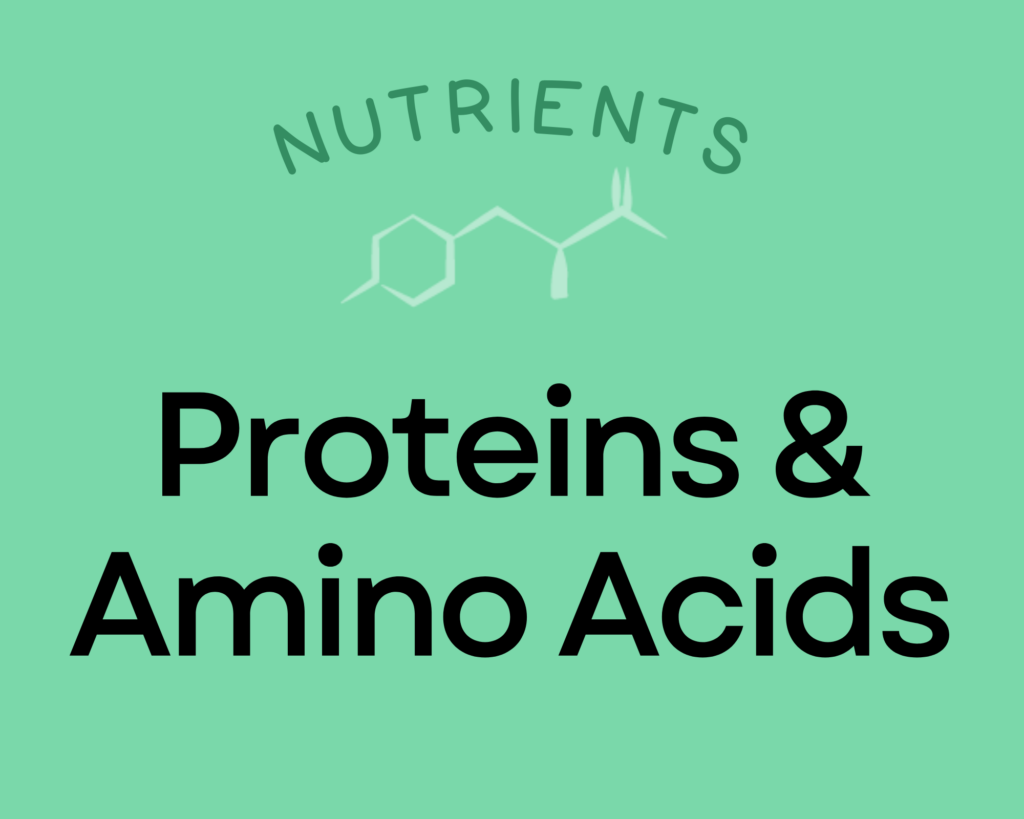
Proteins are the molecules that actually perform most of the various functions of life. In addition to being major structural components of cells and tissues, they have incredibly diverse roles from driving chemical reactions (e.g., enzymes) to signaling (e.g., some types of hormones) to transporting and storing nutrients. Dietary protein is necessary to supply the amino acid building blocks for all of the proteins in our bodies. The recommended daily allowance of protein is 0.36 grams per pound body weight (0.8 grams per kilogram of body weight). That amounts to 56 grams for a 150-pound person. However, it’s important to emphasize that this number is considered a minimum daily allotment, and there is no established upper limit. In fact, many studies have evaluated diets containing three to four times more protein than this minimum and proven benefits to weight management, body composition, hormone regulation, and cardiovascular health. These studies suggest that an optimal protein intake for most people is probably in the range of 1.2 to 1.8 grams per kilogram bodyweight (82 to 122 grams for that same 150-pound person), and that people who are very active may see the best results at even higher intake. Learn more about protein and amino acids here.
Trout Provides 45% DV Vitamin B5 (Pantothenic Acid)
Trout is also an excellent source of vitamin B5 (pantothenic acid), providing 45% of the daily value per 4-ounce serving!

Pantothenic acid (or vitamin B5) is a water-soluble vitamin that serves as a cofactor for coenzyme A—which itself is critical for metabolizing many drugs and toxins, as well as forming derivatives (acetyl-CoA and succinyl-CoA) that participate in the synthesis of cholesterol, fatty acids, melatonin, the neurotransmitter acetylcholine, steroid hormones, heme, and vitamins A and D. Coenzyme A is also needed in the Krebs cycle, giving pantothenic acid a role in energy metabolism. Research suggests that a pantothenic acid derivative (pantethine) can help improve blood lipid profiles and reduce fatty streak formation and lipid deposition in the arteries, giving it a cardio-protective role. Additional research shows that panthothenic acid can accelerate wound healing, boost cellular production of the important antioxidant glutathione, and possibly help improve symptoms of rheumatoid arthritis. Learn more about vitamin B5 here.
Trout Provides 43% DV Manganese
This fish is rich in manganese, providing 43% of the daily value per 4-ounce serving!
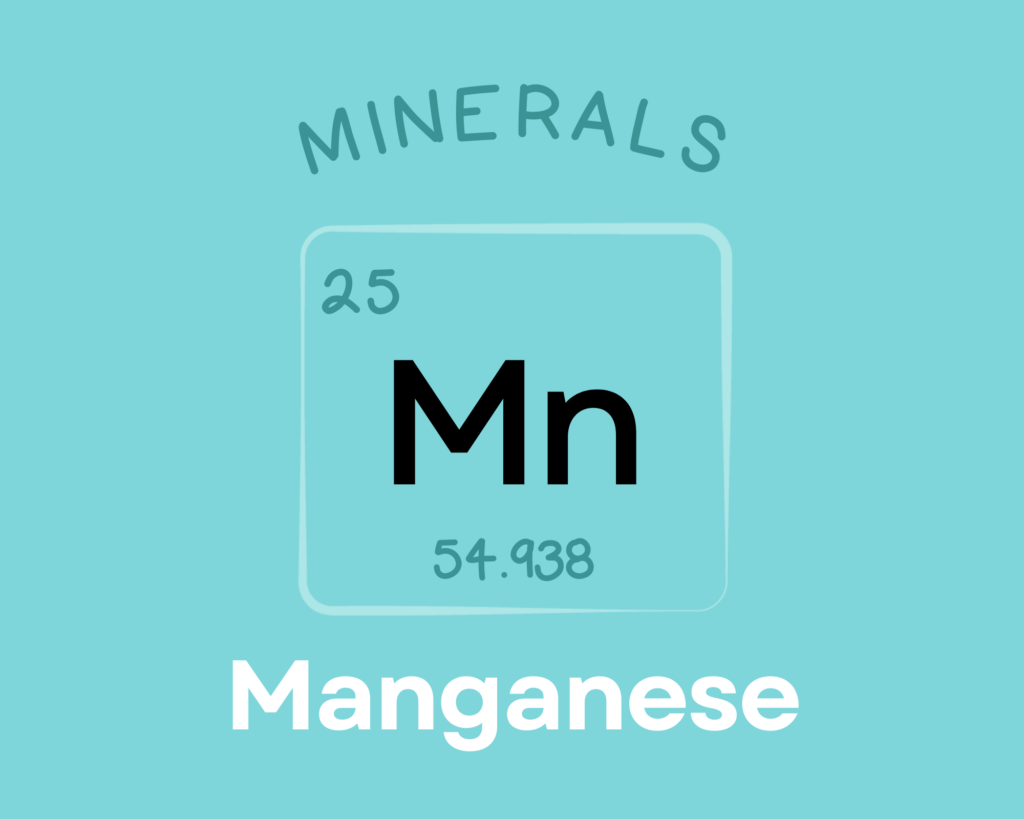
Manganese is an essential mineral that serves as a cofactor and component of numerous enzymes. Through these roles, it’s involved in carbohydrate metabolism, amino acid synthesis, gluconeogenesis, detoxification, lipid processing, free radical defense, bone and collagen formation, and wound healing. Although the research so far is limited, some evidence suggests that manganese can protect against osteoporosis and diabetes, and may even be involved in seizure disorders. Learn more about manganese here.
Trout Provides 34% DV Vitamin B1 (Thiamin)
Trout is high in vitamin B1 (thiamin), providing 34% of the daily value per 4-ounce serving!
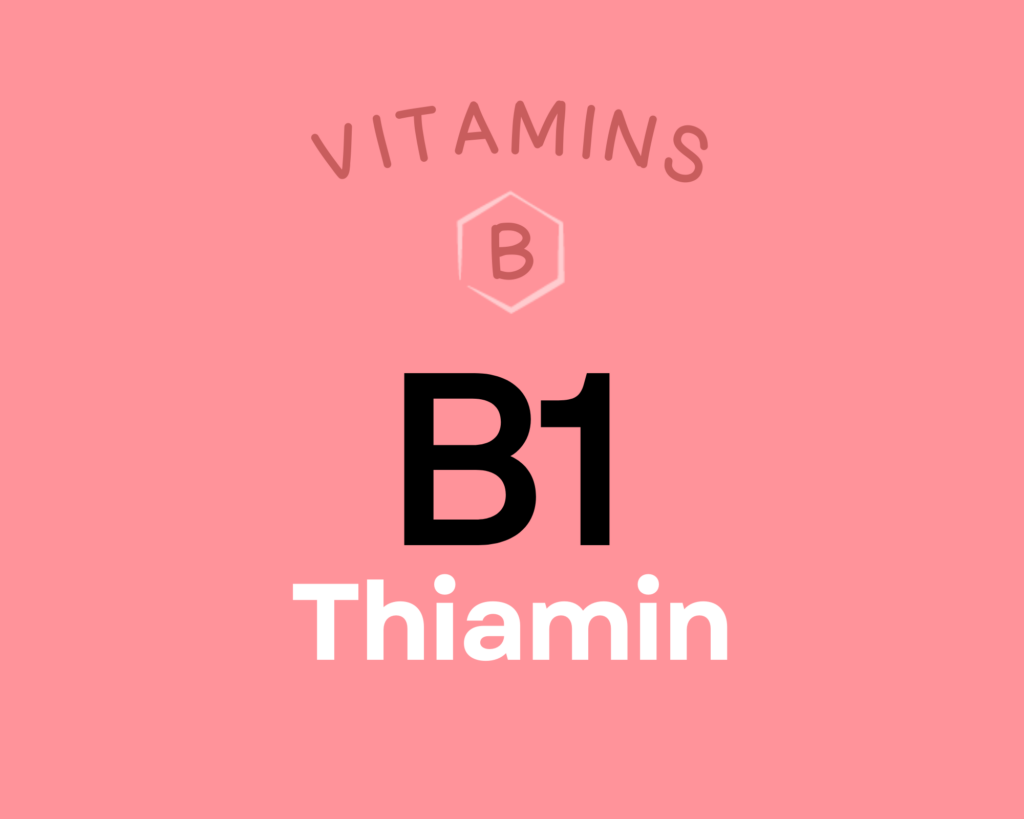
Thiamin (sometimes spelled thiamine, and also called vitamin B1) is a water-soluble vitamin. In its active form of thiamin pyrophosphate, it serves as a cofactor for a variety of enzymes involved in carbohydrate and amino acid metabolism, RNA and DNA production, and generating energy for the Krebs cycle. Research suggests vitamin B1 could help prevent blood sugar and insulin increases in people with disordered glucose metabolism, reduce the risk of cataracts, and improve health and mortality outcomes in patients with sepsis. Because aggressive tumors have high thiamin demands, it’s uncertain whether supplementing with thiamin while having cancer is beneficial due to preventing deficiency, or harmful due to providing more fuel for tumor growth. Insufficient thiamin may increase the risk of Alzheimer’s disease, and when chronic, leads to a deficiency disease called beriberi. Learn more about vitamin B1 here.
Trout Provides 2875.0 μg of Carotenoids
Astaxanthin is carotenoid found in seaweeds and algae, and biomagnified in shellfish and fish that feed on that algae (like trout!)
Trout is also an excellent source of carotenoids, specifically astaxanthin, containing 2875.0 μg of carotenoids per 4-ounce serving!
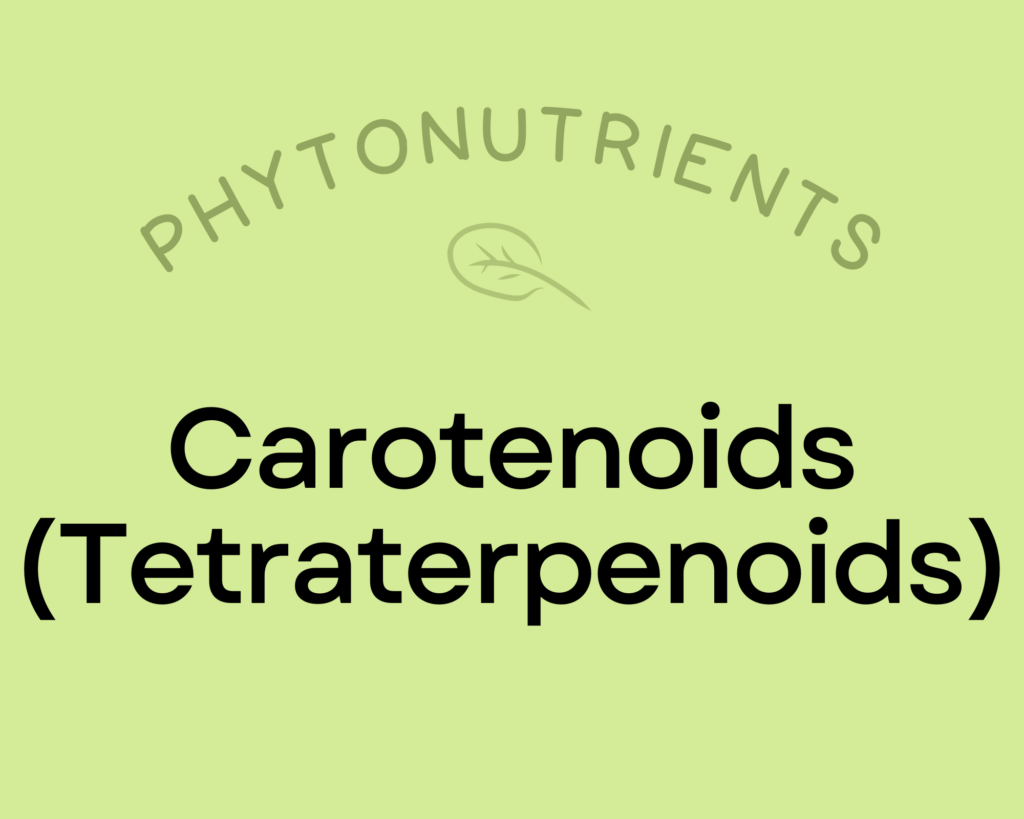
Carotenoids are a diverse group of phytonutrients that are responsible for giving fruits and vegetables vibrant red, orange, and yellow pigmentation. They were one of the earliest phytonutrients ever investigated by scientists (with research dating back to the 1800s!). Across studies, eating foods high in carotenoids appears to reduce the risk of head and neck cancers, supports vision health (particularly age-related eye diseases), may protect against metabolic syndrome and diabetes, and can reduce inflammation. Carotenoids have strong antioxidant properties, and help facilitate communication between cells by promoting the synthesis of connexin proteins, which create gap junctions in cell membranes that allow small molecules to be exchanged (which is part of how cells “talk” to each other!). Consuming carotenoids with fat significantly increases their absorption. Learn more about carotenoids here.
Trout Provides 32% DV Vitamin B3 (Niacin)
Additionally, trout is rich in vitamin B3 (niacin), providing 32% of the daily value per 4-ounce serving!
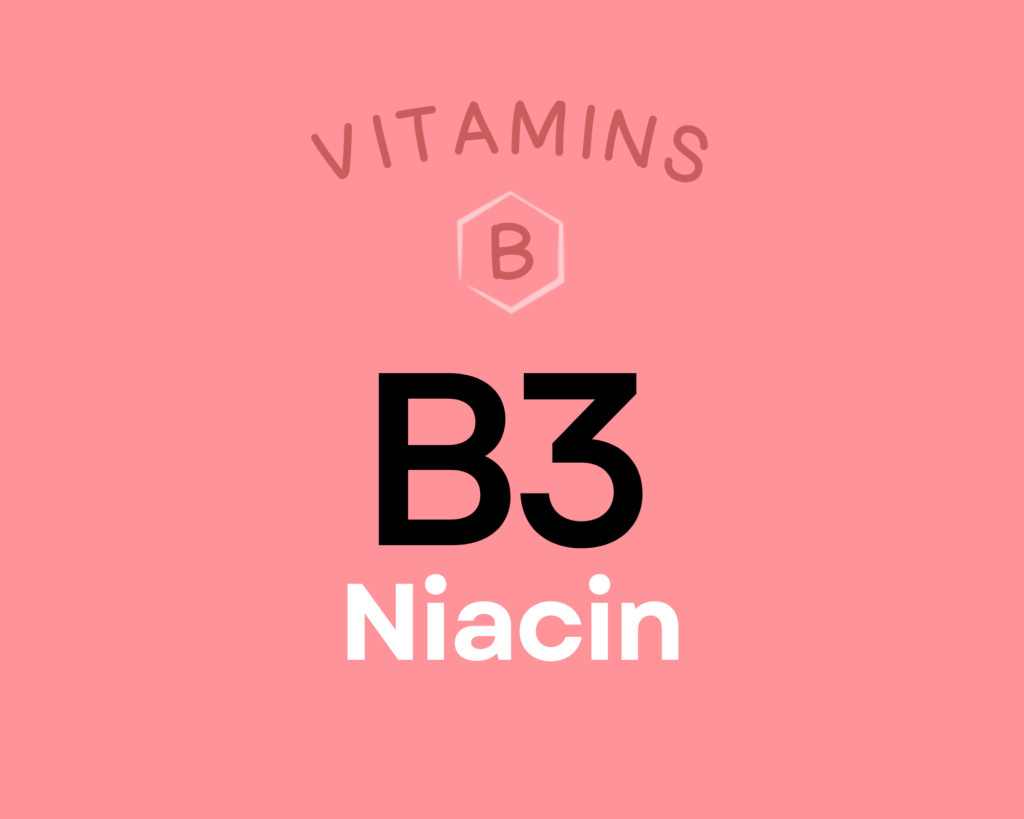
Niacin is a water-soluble B complex vitamin (vitamin B3) that’s needed to produce two very important coenzymes: nicotinamide adenine dinucleotide (NAD) and nicotinamide adenine dinucleotide phosphate (NADP). NAD and NADP are needed for over 400 enzymes involved in DNA repair, fatty acid synthesis, antioxidant systems, detoxification, and hormone synthesis, as well as the breakdown of fat, carbohydrate, protein, and alcohol. Niacin has therapeutic potential for cardiovascular disease and hyperlipidemia, and may also be protective against cancer and type 1 diabetes. Some research suggests it could benefit health outcomes for patients with HIV or schizophrenia as well. Learn more about niacin here.
Trout Provides 29% DV Vitamin B2 (Riboflavin)
Trout is an excellent source of vitamin B2 (riboflavin), providing 29% of the daily value per 4-ounce serving!
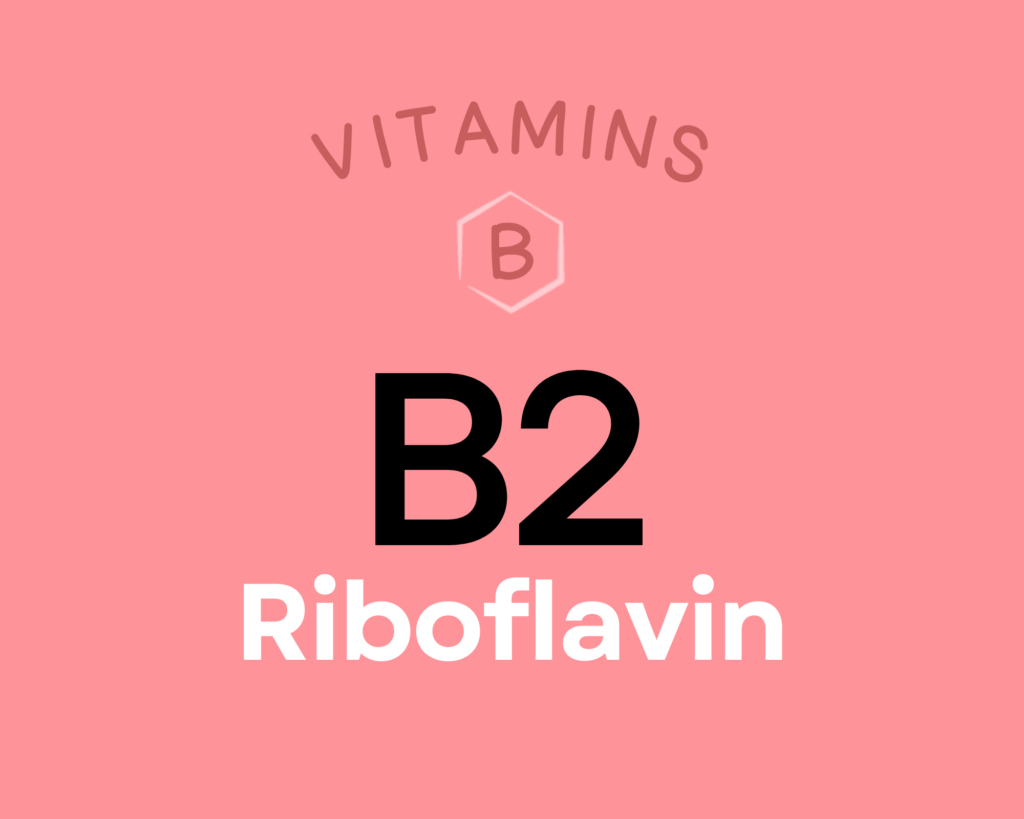
Riboflavin (or vitamin B2) is a vitamin that helps form two important coenzymes involved in oxidation-reduction reactions: flavin mononucleotide (FMN), and flavin adenine dinucleotide (FAD). Collectively, these coenzymes are involved in antibody production, energy production, growth and development, skin and hair health, and the metabolism of several other nutrients (vitamin B6, niacin, folate, and iron). Research suggests a role for riboflavin in preventing or treating migraine headaches, cardiovascular disease, cataracts, and preeclampsia during pregnancy. It also possesses some anti-cancer properties due to its involvement in folate metabolism and MTHFR activity. Learn more about vitamin B2 here.
Trout Provides 26% DV Selenium
This fish is a substantial source of selenium, providing 26% of the daily value per 4-ounce serving!
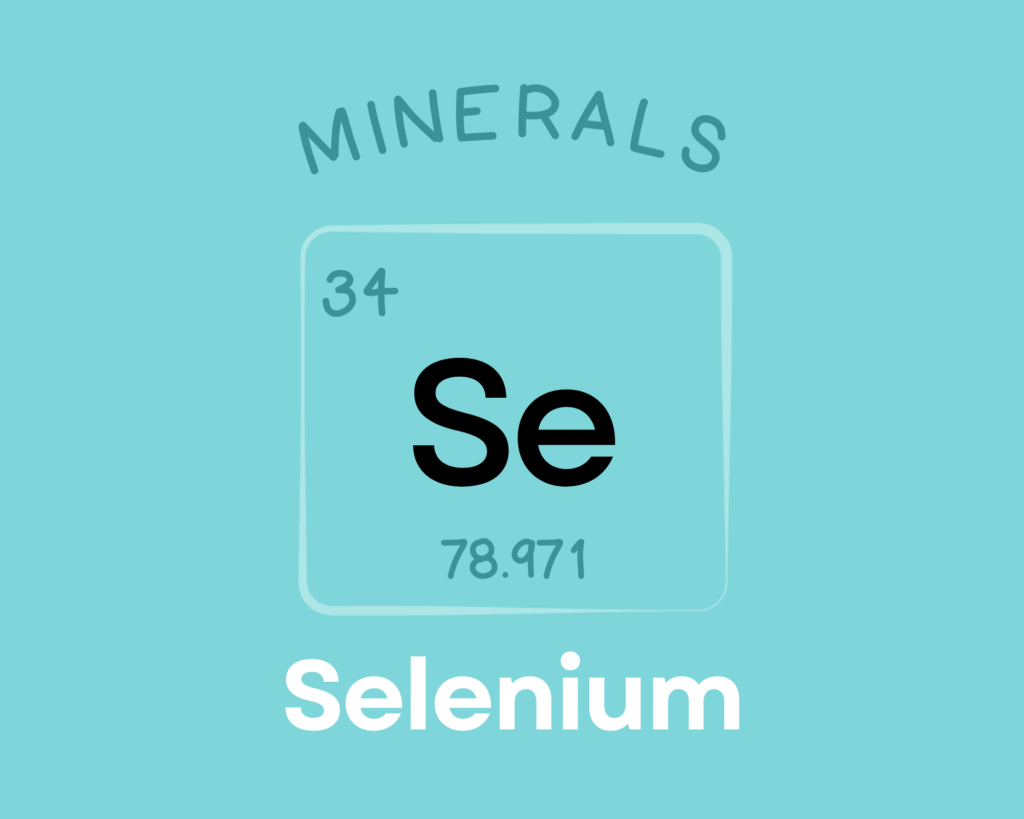
Selenium is a trace mineral needed by all mammals to sustain life. It serves as a component of the non-proteinogenic amino acids selenocysteine and selenomethionine, and also helps form over two dozen selenoproteins involved in reproduction, thyroid hormone metabolism, antioxidant defense, DNA synthesis, and immunity. Observational research suggests selenium could play a protective role against cancer, heart disease, asthma, and inflammatory bowel disease, although human trials have generally been lacking or contradictory. There’s also evidence that selenium can play a preventative role in asthma and inflammatory bowel disease, while also reducing mortality in patients with sepsis. Learn more about selenium here.
Trout Provides 24% DV Copper
Trout is high in copper, providing 24% of the daily value per 4-ounce serving!
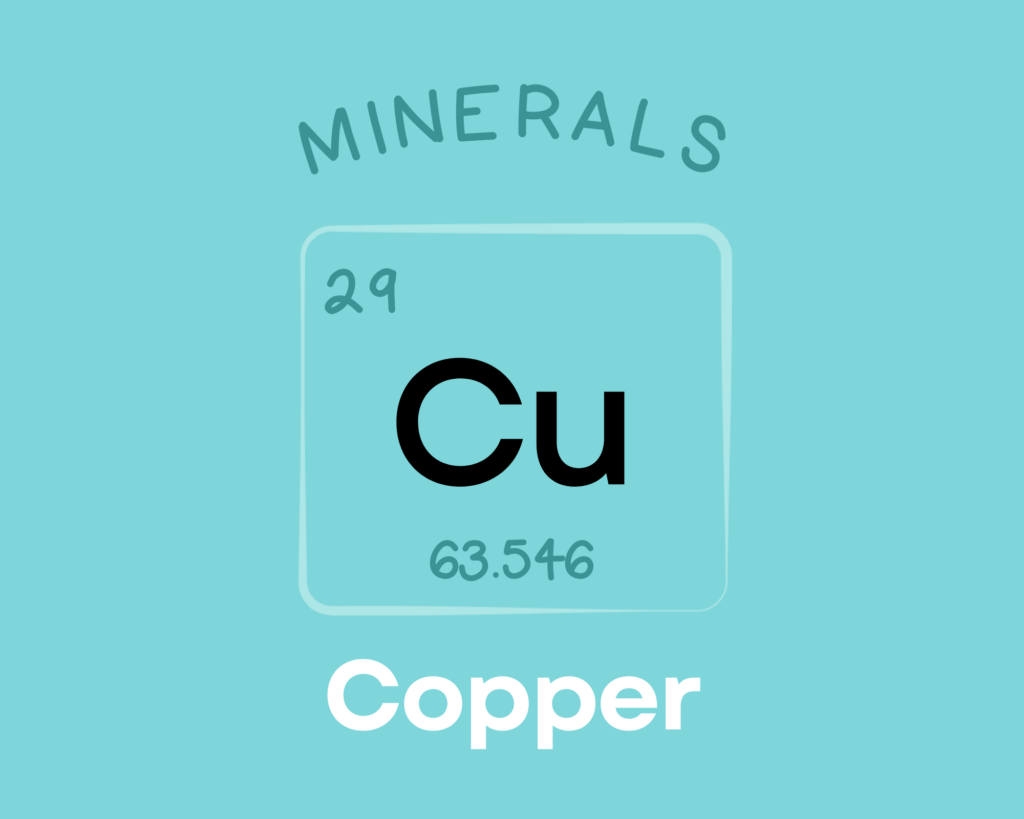
Copper is a trace mineral that’s essential for all living organisms. Copper serves as a component of numerous enzymes and proteins in the body, giving it diverse roles in the growth, development, and maintenance of various organs (including the heart and brain), bone, and connective tissue. Copper is also involved in glucose and cholesterol metabolism, helps regulate gene expression, can scavenge free radicals, and is needed for the production of red blood cells. Learn more about copper here.
Trout Provides 23% DV Phosphorus
Trout is an excellent source of phosphorus, providing 23% of the daily value per 4-ounce serving!
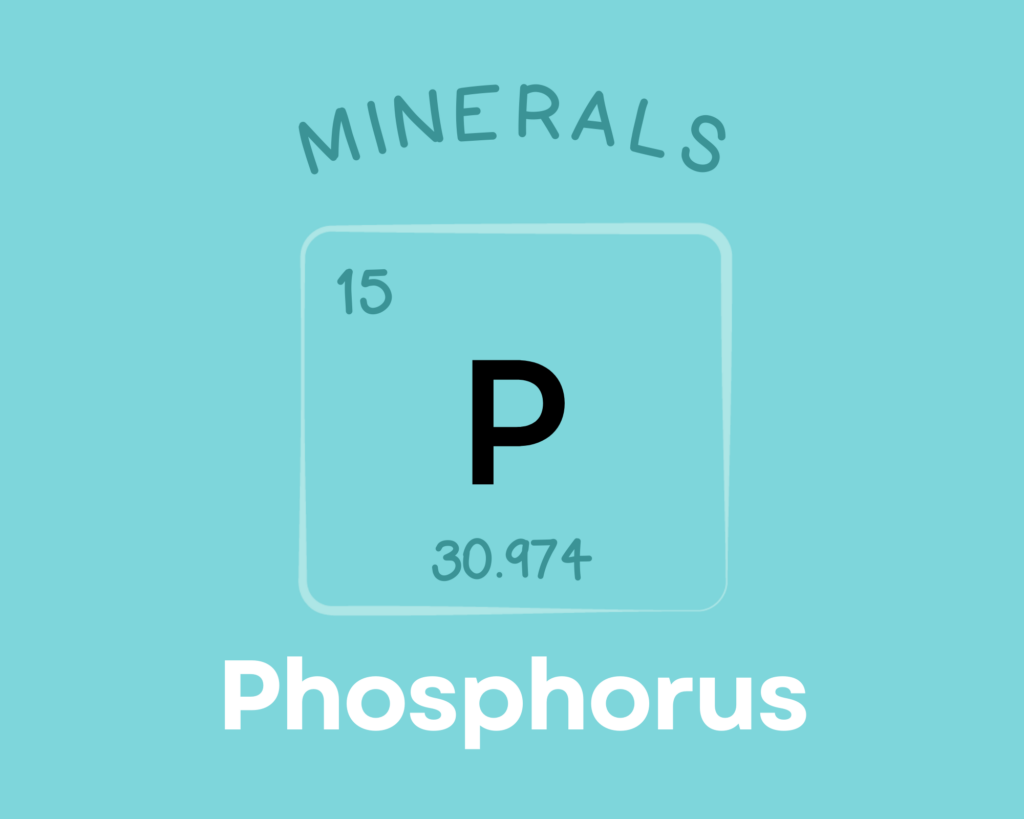
Phosphorus is an essential mineral that makes up about 1% of the total weight of the human body. Along with serving an important structural role for building nucleic acids and cell membranes, phosphorus is involved in numerous biological processes—including acid-base regulation, energy production, cell signaling, and bone mineralization. Excess phosphorus has been linked to a higher risk of cardiovascular disease, fractures, and osteoporosis, especially in the context of a low-calcium diet. Learn more about phosphorus here.
Trout Provides 22% DV Vitamin D
Trout is also an excellent source of vitamin D, providing 22% of the daily value per 4-ounce serving!
Trout (and other fatty fish) are amongst the few foods that naturally contain vitamin D.

Rather than being a “true” vitamin, vitamin D is a group of fat-soluble steroid hormones that can be either obtained from the diet or synthesized from sun exposure. It plays a major role in cellular differentiation, immune function, endocrine health, cardiovascular health, and even the intestinal absorption of several other nutrients (namely calcium, magnesium, and phosphorus). As a result of these diverse functions, getting enough vitamin D is important for protecting against chronic disease (including diabetes, cancer, and degenerative neurological conditions), maintaining good gut health, and keeping a healthy immune system (including protecting against both infectious disease and autoimmunity). Learn more about vitamin D here.
Trout Provides 1.3 mg of CoQ10
This fish is a great source of coQ10, providing 1.3 mg of coQ10 per 4-ounce serving!
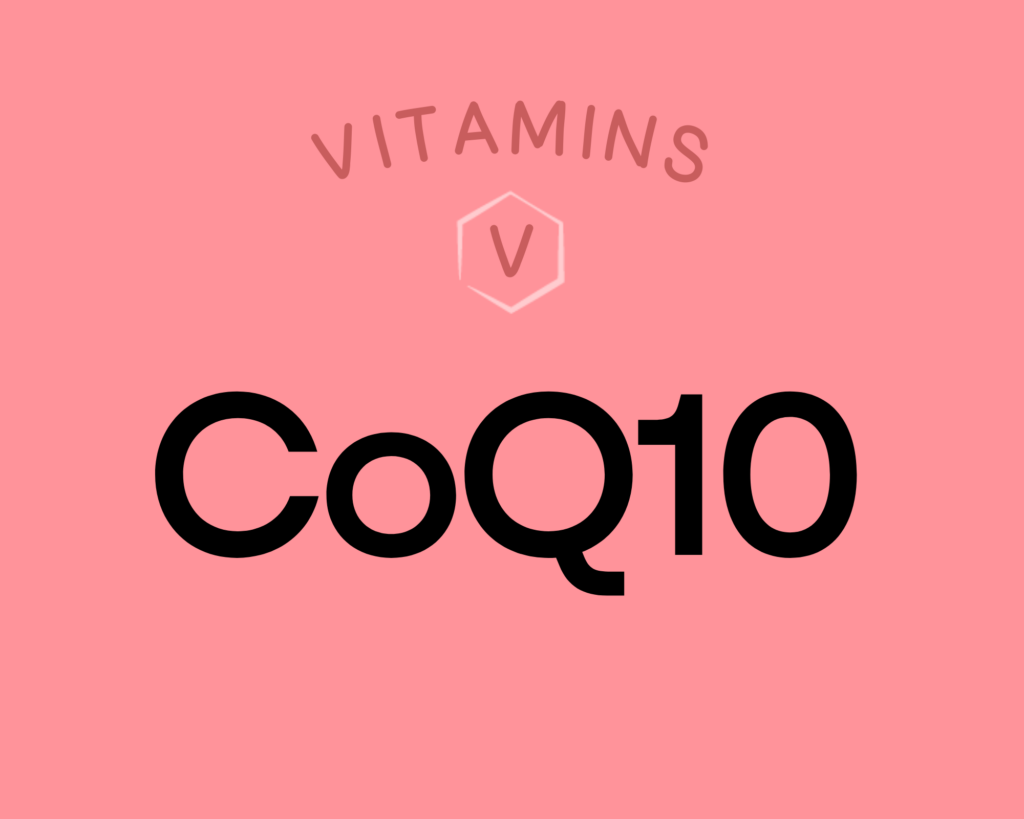
Ubiquinone is the oxidized form and ubiquinol is the reduced, more bioavailable form of the vitaminlike compound coenzyme Q10 (coQ10). CoQ10 is a potent antioxidant and a cofactor in the electron transport chain for the production of ATP. It may be helpful in treating or preventing heart and blood vessel conditions, diabetes, gum disease, muscular dystrophy, chronic fatigue syndrome, and breast cancer. Sources include beef, pork, mackerel, yellowtail fish, and chicken; it’s also found in smaller amounts in vegetables like broccoli and herbs like parsley. Learn more about coQ10 here.
Trout Provides 20% DV Vitamin B7 (Biotin)
In addition, trout is an excellent source of vitamin B7 (biotin), providing 20% of the daily value per 4-ounce serving!
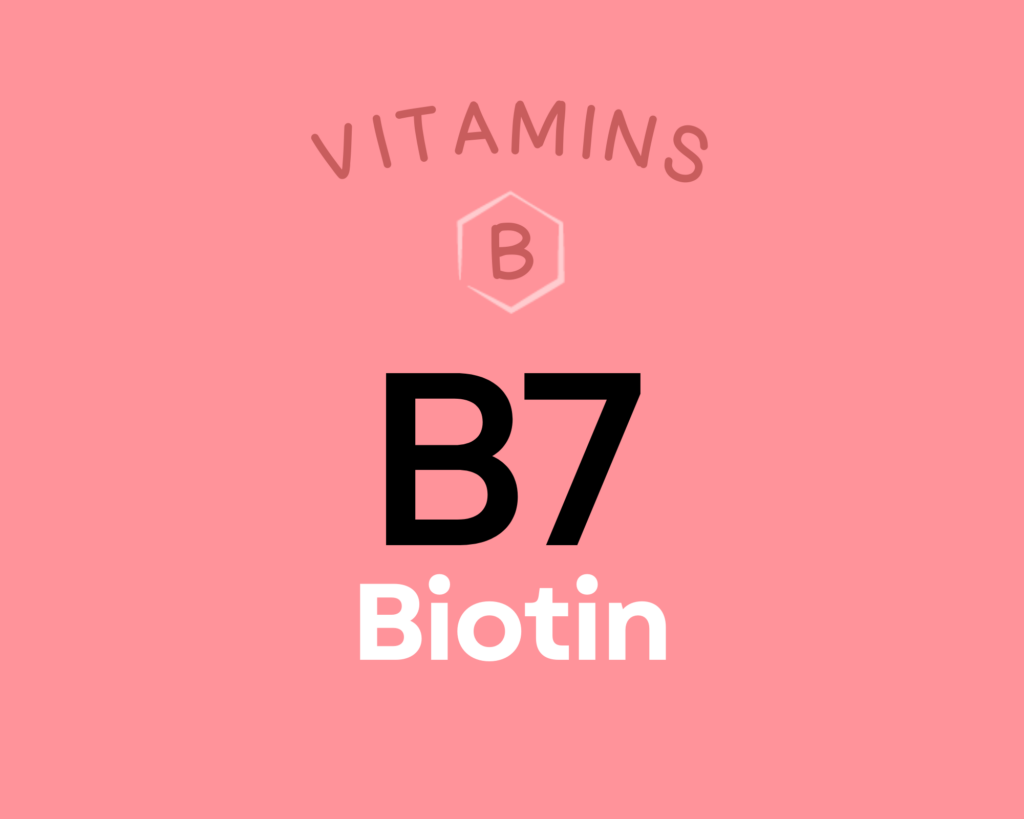
Biotin is a water-soluble B vitamin, also known as vitamin B7. Like other B vitamins, it plays an important role in energy metabolism (serving as a coenzyme for five carboxylase enzymes), neurotransmitter production, cellular function, and the function of various organs. Getting enough biotin can help support healthy nail and hair growth. It’s also particularly important during pregnancy, with low intakes increasing the risk of premature delivery and birth defects. There’s even some evidence biotin can benefit diabetics and reduce functional disabilities in people with multiple sclerosis. Learn more about biotin here.
Want to know the top 500 most nutrient-dense foods?
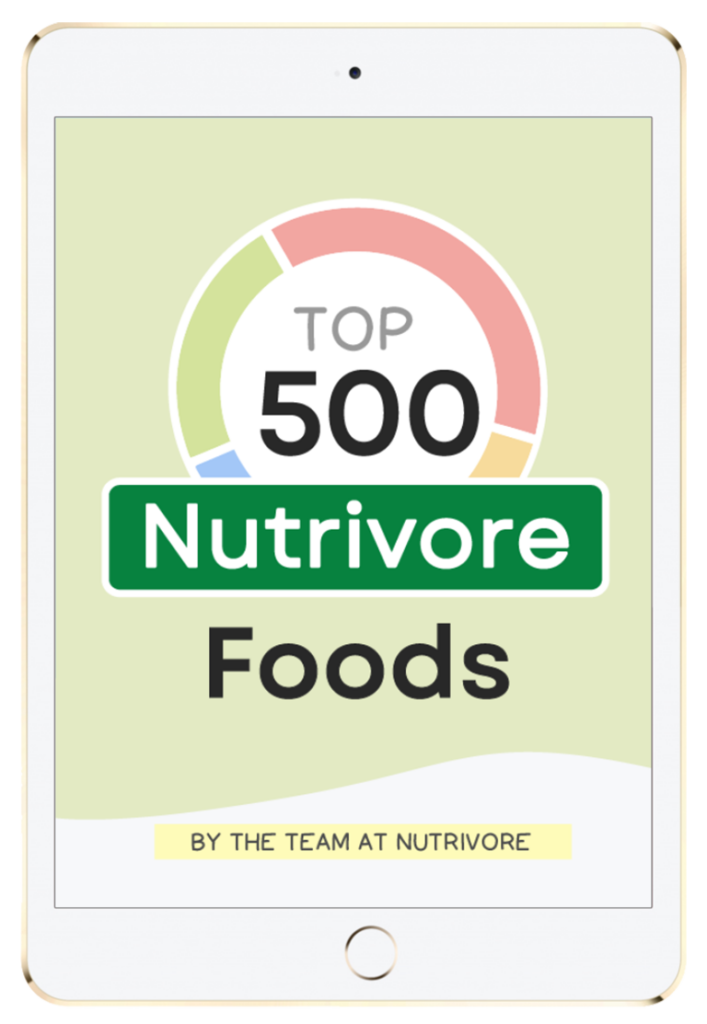
Top 500 Nutrivore Foods
The Top 500 Nutrivore Foods e-book is an amazing reference deck of the top 500 most nutrient-dense foods according to their Nutrivore Score. Think of it as the go-to resource for a super-nerd, to learn more and better understand which foods stand out, and why!
If you are looking for a quick-reference guide to help enhance your diet with nutrients, and dive into the details of your favorite foods, this book is your one-stop-shop!
Buy now for instant digital access.
How Much Trout Should We Eat Per Day?
Fish are nutrient-dense sources of highly-digestible complete protein and outstanding sources of important nutrients in which we are commonly deficient. Let’s just say this seafood is “off the hook!” (Pun intended.)
Fish and shellfish are not only nutrient-dense sources of highly-digestible gut-friendly complete protein and the best food sources of the very important long-chain omega-3 fatty acids, DHA and EPA, but they’re outstanding sources of important nutrients in which we are commonly deficient. Eating seafood reduces risk of cardiovascular disease, type 2 diabetes, obesity and some forms of cancer.
Fish is a great source of vitamins B1, B2, B3, B6, B9, B12 and E, zinc, phosphorus, magnesium, iron, copper, potassium and selenium, with oily cold-water fish also providing substantial amounts of vitamin A and vitamin D. Fish with bones remaining, such as canned salmon and sardines, are the best dietary sources of calcium in the food supply. And marine fish are an excellent dietary source of iodine.
In fact, every 100 grams per day of seafood decreases all-cause mortality by 7%. And, every 20 grams per day of fish decreases cardiovascular disease mortality by 4%. Aim to eat three or more servings of seafood weekly (and up to every meal!). Learn more about seafood here.
Consumption of trout is associated with a lower risk of heart attack, hypertension, obesity, and diabetes! It’s always best to mix up the foods you eat day to day (aiming for a wide variety of different fish and shellfish throughout the week), and trout definitely has a place at the table.
Easily track your servings of Nutrivore Foundational Foods!

The Nutrivore Weekly Serving Matrix
The Nutrivore Weekly Serving Matrix digital resource is an easy-to-use and flexible weekly checklist designed to help you maximize nutrient-density and meet serving suggestions of Nutrivore foundational foods, all without having to weigh or measure your foods!
Includes a 22-page instructional guide and downloadable interactive guides.
Buy now for instant digital access.
Citations
Expand to see all scientific references for this article.
Chin SF, Liu W, Storkson J, Ha Y, Pariza M. Dietary sources of conjugated dienoic isomers of linoleic acid, a newly recognized class of anticarcinogens. Journal of Food Composition and Analysis. 1992 Sept(5):185-197. DOI:10.1016/0889-1575(92)90037-K
Clements RS Jr, Darnell B. Myo-inositol content of common foods: development of a high-myo-inositol diet. Am J Clin Nutr. 1980 Sep;33(9):1954-67. doi: 10.1093/ajcn/33.9.1954. PMID: 7416064.
EFSA Panel on Additives and Products or Substances used in Animal Feed, 2005. Opinion of the Scientific Panel on additives and products or substances used in animal feed (FEEDAP) on the safety of use of colouring agents in animal nutrition – PART I. General Principles and Astaxanthin, EFSA Journal. 2005; 3( 12):291, 40 pp. doi:10.2903/j.efsa.2005.291
Ey J, Schömig E, Taubert D. Dietary sources and antioxidant effects of ergothioneine. J Agric Food Chem. 2007 Aug 8;55(16):6466-74. doi: 10.1021/jf071328f. Epub 2007 Jul 6. PMID: 17616140.
Fineli Finnish Food Composition Database: Trout
Gormley TR, Neumann T, Fagan JD, Brunton NP. Taurine content of raw and processed fish fillets/portions. European Food Research and Technology. 2007. 225(5):837-842. doi: 10.1007/s00217-006-0489-4
Pravst I, Zmitek K, Zmitek J. Coenzyme Q10 contents in foods and fortification strategies. Crit Rev Food Sci Nutr. 2010 Apr;50(4):269-80. doi: 10.1080/10408390902773037. PMID: 20301015.
USDA Food Central Database: Fish, trout, mixed species, raw
Watanabe T, Kioka M, Fukushima A, Morimoto M, Sawamura H. Biotin content table of select foods and biotin intake in Japanese. Int J Anal Bio-Sci. 2014. Vol 2(4):109-125.


